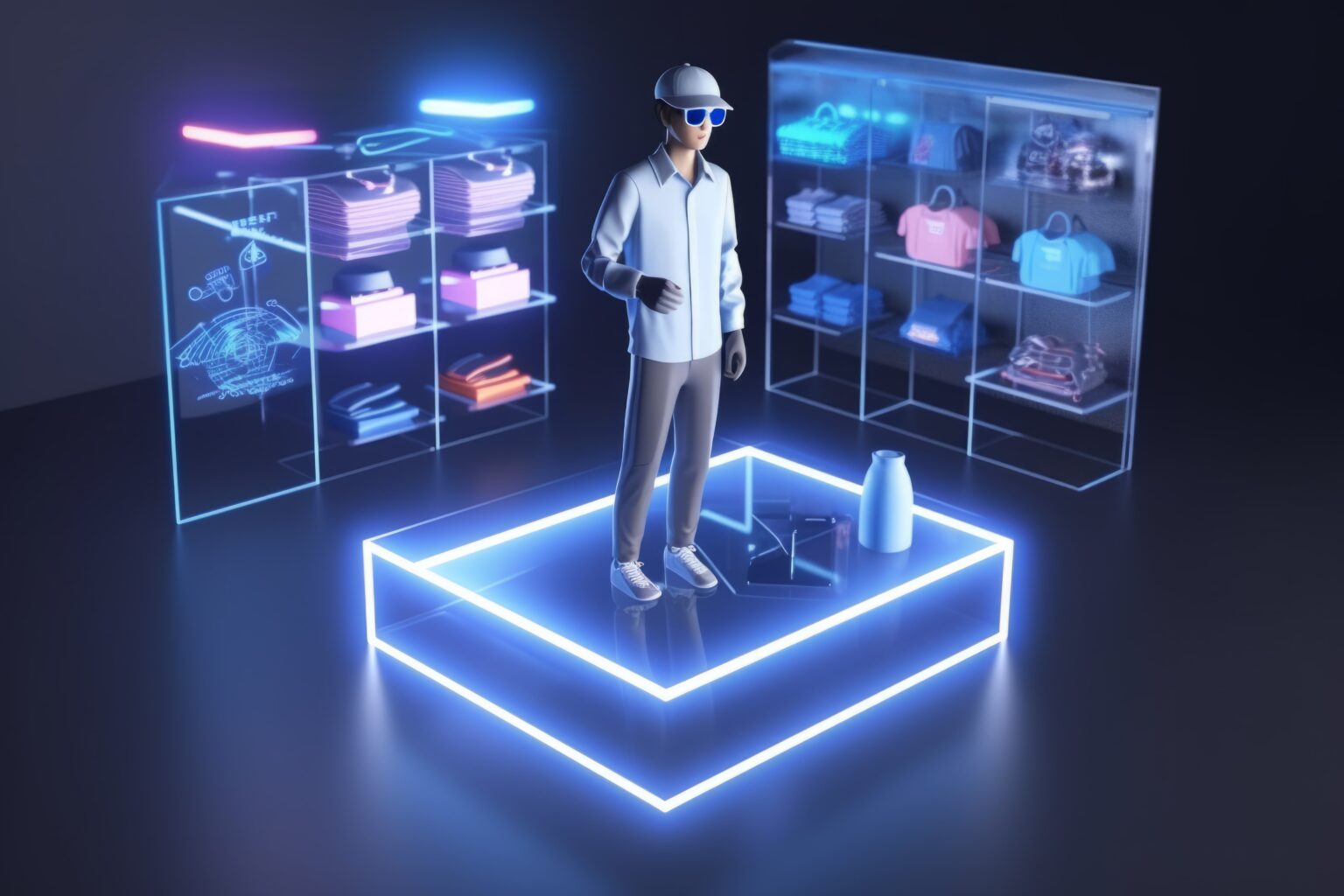In today’s digital age, retailers are leveraging augmented reality (AR) technology to transform the in-store shopping experience into an immersive and interactive journey. By blending digital content with the physical environment, AR enhances product visualization, engagement, and personalization, driving customer satisfaction and loyalty. This article delves into the evolving landscape of immersive retail and the pivotal role of augmented reality technology in redefining the in-store shopping experience.
- Understanding Augmented Reality (AR) in Retail:
- Definition: Augmented reality overlays digital content, such as images, videos, and 3D models, onto the real-world environment, enhancing the user’s perception and interaction with physical objects.
- Applications: In retail, AR technology is utilized to provide virtual try-on experiences, interactive product demonstrations, in-store navigation, and personalized recommendations, creating engaging and memorable shopping experiences for customers.
- Key Features and Benefits of AR in Retail:
- Product Visualization: AR enables customers to visualize products in their real-world environment before making a purchase, allowing them to assess size, fit, color, and style accurately and reducing the need for returns.
- Enhanced Engagement: Interactive AR experiences captivate customers’ attention and encourage exploration, fostering deeper engagement with products and brands and prolonging dwell time in-store.
- Personalized Recommendations: AR-powered recommendation engines analyze customer preferences and purchase history to deliver personalized product suggestions and styling advice, tailored to individual tastes and preferences.
- In-Store Navigation: AR-based navigation systems guide customers through the store, helping them locate products, promotions, and points of interest efficiently and enhancing the overall shopping experience.
- Immersive Retail Use Cases:
- Virtual Try-On: AR-powered virtual try-on solutions allow customers to “try on” clothing, accessories, eyewear, and cosmetics virtually using their smartphones or interactive kiosks, enabling them to make informed purchase decisions and reducing the need for physical fitting rooms.
- Interactive Product Demonstrations: AR enhances product demonstrations by overlaying interactive 3D models, animations, and product information onto physical products, educating customers about features, benefits, and usage scenarios in a captivating and memorable way.
- In-Store Marketing and Promotions: Retailers use AR to create immersive marketing campaigns and promotions, such as interactive product launches, branded experiences, and gamified shopping experiences, driving foot traffic, and boosting sales.
- Augmented Shopping Lists: AR-enabled shopping lists and smart shopping carts enhance convenience and efficiency by providing real-time product recommendations, aisle navigation, and promotional offers based on customers’ preferences and shopping history.
- Implementation Considerations:
- Technology Infrastructure: Retailers must invest in robust AR infrastructure, including hardware devices, software platforms, and network connectivity, to deliver seamless and immersive AR experiences in-store.
- Content Creation: Developing high-quality AR content, such as 3D models, animations, and interactive overlays, requires specialized skills and tools, as well as collaboration with content creators, designers, and developers.
- User Experience Design: Designing intuitive and user-friendly AR interfaces and interactions is crucial for ensuring a positive and seamless shopping experience, minimizing friction and maximizing engagement.
- Training and Education: Providing training and education to store staff and customers on how to use AR-enabled devices and applications effectively enhances adoption and satisfaction, ensuring a smooth transition to immersive retail experiences.
- Future Outlook and Adoption Trends:
- Continued Innovation: The adoption of AR in retail is expected to grow as technology advances, enabling more sophisticated and immersive experiences, such as spatial computing, haptic feedback, and real-time collaboration.
- Integration with Omnichannel Retail: AR will increasingly be integrated with omnichannel retail strategies, bridging the gap between online and offline shopping experiences and providing seamless continuity across digital and physical touchpoints.
- Personalization and Data Analytics: AR-powered analytics and machine learning algorithms will enable retailers to gather valuable insights into customer behavior, preferences, and intent, driving personalized recommendations and targeted marketing campaigns.
Conclusion: Augmented reality technology is revolutionizing the in-store shopping experience, offering immersive, interactive, and personalized experiences that delight customers and differentiate brands in the competitive retail landscape. By embracing AR technology and leveraging its capabilities to enhance product visualization, engagement, and personalization, retailers can create memorable and transformative shopping experiences that drive customer satisfaction, loyalty, and long-term success in the digital age of retail.



